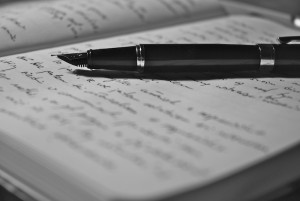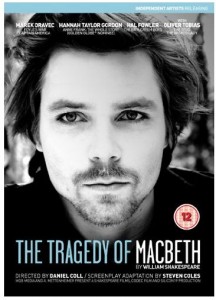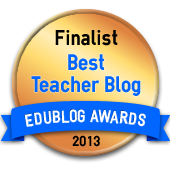-
Recent Posts
- A long slow goodbye…
- Lear’s journey
- Some themes in Lear…
- King Lear – Plot Chronology
- King Lear quotes (in translation!)
- Justice in King Lear – how to construct an answer…
- The Old Warrior and Me
- Single text options…
- Tackling the Comparative
- Reading Shakespeare (Othello)
- Game Based Learning
- Originality – Freshness – Energy – Style
Categories
Category Archives: Leaving Cert Paper 2
Writing Poetry
“I am a Year 10 student in XXX. As part of the Middle Years Program, I am required to complete a Personal Project. For this project, I have chosen to write several poems, and put them into a book format. Your website has helped me understand what the components of a poem are, and the terminology surrounding poetry. I would be extremely grateful if you could help me further. Do you have any tips for students when they are writing poetry? In your opinion, should I plan first, and deliberately use poetry techniques, or should I let the ideas flow? I appreciate any advice you can give me, and this would honestly help me so much”
—
I received this email recently and figured I’d publish my reply in case it’s of any use to those of you out there suffering from poet’s block:
—
My advice is this: when I’m writing poetry I try to just let the ideas flow onto the page first. Whatever you are thinking and feeling spit it out.
—
Then I go back and look for the places where I’ve used the same idea more than once. I select the line which best expresses the idea in question and cross out the other lines which are simply saying the same thing in a different way.
—
I do this for all of the ideas at the core of the poem.
—
At the end of this process I’ll usually only end up keeping about one third of what I originally wrote.
—
So having gotten the ideas out, and then edited out the unnecessary repetition of ideas, I pretty much dismantle the poem and then build it up a second time, this time paying more attention not just to WHAT I want to say but also to HOW I want to express it. This is the point at which I become more deliberate in my use of poetic techniques.
—
Then I leave it for a day or two.
—
When I take my third pass at the poem, this is usually where it all starts to come together and start to resemble a proper poem rather than just a bunch of ideas thrown onto a page randomly.
—
I’m sure there are lots of ways of approaching poetry, but this is how I do it!
—
Hope that helps,
Evelyn
Posted in Poetry
Imagery in Macbeth (2)
This post is going to discuss BOTH language and imagery, rather than just pure imagery (which is limited to metaphors and similes, with a bit of symbolism thrown in for good measure). Taking into account the reasons why Shakespeare used poetic imagery while writing his dialogue (if you haven’t read Imagery in Macbeth part 1, click here) have a look at the quotes below, which are roughly grouped together by theme / image type. Also bear in mind that his use of language is broader than his use of ‘imagery’ and includes techniques like repetition, dramatic irony, allusion, symbolism, rhetorical questions etc.
Ask yourself what the IMPACT of each quote is on you:
- does it help you to understand a character better?
- does it create a particular atmosphere? (taking the place of special effects – lightning, fake blood, smoke machine, sound effects?)
- does it emphasise one of the major themes in the play? how does it add to your understanding of this theme?
- is the language / image itself just really clever, striking, memorable, profound, dramatic, disturbing, upsetting, ironic?
Obviously in an exam you’d only have the opportunity to discuss a fraction of the quotes I’ve included below. I’ve got scene references for some but not all of them!
Supernatural:
- “Fair is foul and foul is fair | Hover through the fog and filthy air” (augmenting earlier references to thunder, lightning and rain).
- “Though his bark cannot be lost | Yet it shall be tempest tossed” Witches
- “You should be women and yet your beards forbid me to interpret that you are so” Banquo
- “If you can look into the seeds of time | and say which grain will go and which will not | Speak to me then” Banquo
- “Is this a dagger which I see before me | the handle towards my hand?“
- “Come, you spirits that tend on mortal thoughts, unsex me here, And fill me from the crown to the toe top-full of direst cruelty! Make thick my blood; stop up the access and passage to remorse……… ………… Come, thick night, and pall thee in the dunnest smoke of hell, That my keen knife see not the wound it makes, Nor heaven peep through the blanket of the dark, To cry ‘Hold, hold!‘ ” All of this is part of Lady Macbeth’s soliloquy in response to the news that Duncan will be paying a visit to her home (nice lady eh?)
- “Never shake thy gory locks at me” Macbeth to Banquo’s ghost.
- “This is the very painting of your fear” Lady Macbeth to her husband.
- “Double, double toil and trouble; Fire burn, and cauldron bubble”. Witches (4.1.1)
Images of disguise and concealment (appearance vs reality):
- “Look like the innocent flower but be the serpent under’t” Lady Macbeth, 1, 5
- “False face must hide what the false heart doth know” Macbeth, 1,7
- “There’s daggers in men’s smiles. The near in blood, the nearer bloody” Donalbain 2, 3.
- Macbeth tells the murderers he hires to kill Banquo and Fleance that he is
- “Masking the business from the common eye for sundry weighty reasons” 3,1
- He tells Lady Macbeth that they must “make our faces vizards to our hearts, disguising what they are” 3,2
- He admits “there’s not a one of them but in his house I keep a servant fee’d” 3,4
- The mask comes off when he resolves “henceforth the very firstlings of my heart shall be the firstlings of my hand” 4,1
Clothing Imagery:
- “The Thane of Cawdor lives: why do you dress me in borrowed robes?” Macbeth, 1,3
- “I have bought Golden opinions from all sorts of people, Which would be worn now in their newest gloss, Not cast aside so soon” Macbeth, 1,7
- “Was the hope drunk wherein you dressed yourself?” Lady Macbeth to Macbeth 1,7
- “Adieu! Lest our old robes sit easier than our new” Macduff to Ross, 2,4
- “Now does he feel his title hang loose about him, like a giant’s robe upon a dwarfish thief” Angus, 5,2
Blood Imagery:
- “What bloody man is that?” Duncan, 1,3
- “He unseamed him from the nave to th’ chops and fixed his head upon our battlements” Injured soldier 1,3
- “I’ll gild the faces of the grooms withal, for it must seem their guilt” Lady Macbeth
- “Will all great Neptune’s oceans wash clear this blood from my hand? No this my hand will rather the multitudinous seas incarnadine making the green one red” Macbeth
- “A little water clears us of this deed” Lady Macbeth
- “Here lay Duncan, his silver skin laced with his golden blood” Macbeth, ironically, explaining his murder of the grooms.
- “Blood will have blood” Macbeth
- “I am in blood stepp’d in so far that should I wade no more, returning were as tedious as go o’er” Macbeth
- “My soul is too much charged with blood of thine already” Macbeth
- “Out out damned spot” Lady Macbeth
- “Who would have thought the old man to have so much blood in him?” Lady Macbeth
- “All the perfumes of Arabia will not sweeten this little hand” Lady Macbeth
Nature / Weather / Animal Imagery:
- “So foul and fair a day I have not seen” Macbeth
-
“I have given suck, and knowHow tender ’tis to love the babe that milks me.I would, while it was smiling in my face,Have plucked my nipple from his boneless gumsAnd dashed the brains out, had I so sworn as youHave done to this” Lady Macbeth
- “The night has been unruly… lamentings heard i’ th’ air, strange screams of death…some say the earth was feverous and did shake” Lennox
- “His gashed stabs looked like a breach in nature” Macbeth
- “By the clock tis day and yet dark night strangles the travelling lamp” Ross
- “A falcon was by a mousing owl hawked at and killed” Duncan’s horses: “Tis said they ate each other” Old Man
- “They have tied me to a stake: I cannot fly | But bear like I must fight the course” Macbeth
Imagery in Macbeth (1)
Shakespeare’s tragedies, although they are plays, are written as a form of poetry. They contain lots of rhyme, lots of imagery and a rhythm called iambic pentameter. Basically this is a sentence made up of ten syllables. The second syllable is stressed each time so the rhythm becomes:
di|DUM di|DUM di|DUM di|Dum di|DUM
In|sooth I | know not |why I | am so| sad
It | wear ies | me you | say it |wear ies | you
If it doesn’t rhyme it’s known as ‘blank verse’. If it does rhyme then it’s just plain old iambic pentameter, occasionally with extra syllables or odd stresses here and there. Here’s an example from Macbeth:
“Hear it not Duncan; for it is a knell
That summons thee to heaven or to hell”
Anyway, the basic point is that Shakespeare had all of his characters speak in a very vivid and poetic way.
So why did he do it?
- Some critics have suggested that he was trying to make up for the fact that he didn’t have any special effects – lighting, smoke machines, sound effects. This makes sense if you consider that when the witches appear they set the scene saying they will meet again “in thunder, lightening or in rain” as they “hover through the fog and filthy air“. Thus vivid imagery is used to create atmosphere.
- A second reason he wrote poetically was because he was a poet and he wanted to show off. Word play was very popular back in the day, it was a way of showing off how clever you were.
- Thirdly, this may seem obvious to the point of it being completely stupid for me to even mention it, but this was an era with no photos, no TV, no cinema, no screens. Basically no moving images. The only static images were paintings and only rich people could afford them. Although artists had managed to develop perspective in their paintings during the renaissance (from about 1400 onwards), they didn’t have photocopiers and when Shakespeare was writing in the late 1500’s and early 1600’s the printing press was still a pretty expensive way to create books and pass on knowledge. Plus most people were still illiterate (they couldn’t read or write). So for the regular pleb on the street their only access to images was in their dreams or in the theatre. The only way you could plant images in someone’s head (outside of SHOWING them the thing in person) was by creating pictures using words. So people who could create vivid imagery using words were like OMG a really really big deal. Basically they were Gods. We don’t have the same respect for wordsmiths these days because if you want to show people something you can take a photo, or search google images, or film it on your phone, or make a movie. You get the idea.
- Finally, Shakespeare used images to illustrate his themes and to help his audience to understand his characters better.
Those are the main reasons why Shakespeare wrote his plays using dramatic, vivid and memorable imagery. There may be more reasons but I’m not a Shakespearean expert I’m just lil old me and that’s all I’ve got!
Comments Off on Imagery in Macbeth (1)
Posted in Macbeth
Tagged imagery, leaving cert english, macbeth
10 Q’s – Macbeth
To really get to grips with Macbeth’s character you must form your own personal opinions. Use these 10 questions to get to grips with how YOU feel about his personality. Remember there is no RIGHT interpretation there are only opinions backed up with quotes / examples.
- Valiant soldier or violent schemer at the beginning?
- Which factor is most influential: (a) Witches & their prophesy? (b) Vaulting ambition? (c) Lady Macbeth?
- Immediate & overpowering remorse – what’s that about?
- Why is he obsessed with killing Banquo? (oh yeah, and Fleance too)
- Has he completely lost it in the Banquet scene? (do you think the Ghost is real or imaginary?)
- How does he justify his decision to proceed down the path of evil?
- He visits the Witches for a second time. Why? How does he react?
- Explain his decision to murder Lady Macduff & children (increasingly erratic & illogical behaviour)
- What last vestiges of humanity, conscience, nobility, bravery do we see?
- Is he nothing more than a “dead butcher” or do we the audience feel differently about him at the end?
Helen Gardner describes Macbeth’s transformation as a path to damnation beginning at one extreme and ending at the other: “From a brave and loyal general, to a treacherous murderer, to a hirer of assassins, to an employer of spies, to a butcher, to a coward, to a thing with no feeling for anything but itself, to a monster and a hell-hound.”
Personally I think this is a little simplistic.
“Brave and loyal general” – yet even at the beginning there are disturbing undercurrents to his personality.
“Treacherous murderer” – yes he’s a murderer, but one who is crippled by remorse.
“A coward” – he refuses to surrender but only because he believes that to surrender would be cowardly.
“A thing with no feeling for anything but itself” – why then is he so profoundly suicidal when he receives news of his wife’s death?
“A hell-hound” – why does he try to avoid a fight with Macduff? Why do we still feel pity for him?
Anyway, it just goes to show, each person who sees the play brings a different interpretation of his character away with them.
Comments Off on 10 Q’s – Macbeth
Posted in Macbeth
Sample answer unseen poetry
When tackling the unseen poem, discuss the three T’s – themes, tone and techniques AKA ideas, feelings and style of writing. Don’t feel you have to be complimentary about the entire poem and don’t feel you have to discuss every line. Oh, and obviously I’m at a big advantage here: the poem isn’t unseen to me because I wrote the bloody thing!
KEY:
Blue = themes/ideas
Red = tone / feelings
Purple = techniques / style
Green = personal opinion / response
Bold = flow (connectives / linking phrases)
___
Write a personal response to the poem “Mother” by Evelyn O’Connor.
___
What first strikes me is the depth of love and admiration the poet feels for her mother. She compares her to the sun in an extended metaphor which runs the entire length of the poem. The comparison is a clever one, for how else would we survive without the warmth and protection offered to us by the sun and by our beloved mothers?
I also like how the transition from present to past is achieved as she “orbit[s] the past, a seething mass of nuclear energy” and offers us vivid images of her childhood through the use of very active verbs “swimming…splashing…eating“. There’s a lovely music in the internal half-rhymes of “so / don’t, past / mass, gingerbread men / then, eclipse / crisp” and the focus on food captures the innocent joy of being a kid: she remembers “Easter chocolate nests, plum puddings at Christmas, gingerbread men and now and then éclairs oozing cream down greedy fingers“. The way the layout of the poem mimics the action being described also made me smile, as the cream – and the poem – flows down the page. For me this flashback sequence is the strongest section of the poem.
However, there are times when the rhymes don’t really work – “sea / library” seems a bit forced, and the poem borders on cliché on occasion, particularly when she observes “doubtless we could search to the ends of the earth for something you would not do for us“. Furthermore, for me the final line seems hopelessly naive “the sun keeps shining and never will die” although this could perhaps be testimony to the poet’s firm belief that she simply could not survive without her mother, who “never burn[s] out” and “never burn[s] up“.
Nonetheless, I do like how the poem captures the universal truth that it’s hard to really get to know your parents (“once I saw a solar eclipse…but it was over all too quickly and my vision blurred”) particularly if you grow up in a big family where there are “so many… always wanting, needing, asking, pleading, bleeding dry your store of selfless love“. The poem captures ‘big truths’ but perhaps not in a very original way.
Posted in Poetry, Unseen poetry
Tagged Evelyn O'Connor, leaving cert english, mother, poem, sample answer, unseen poetry






